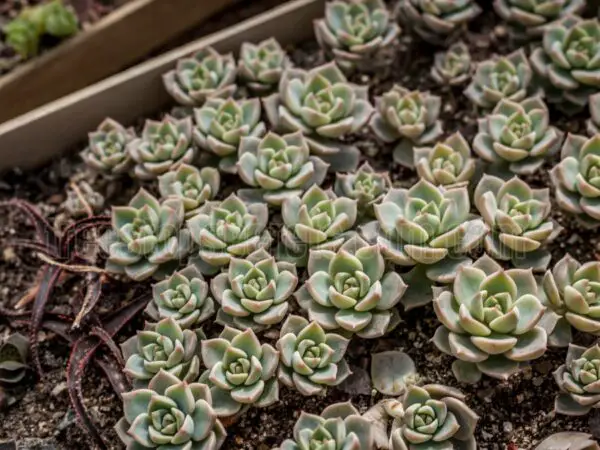Are you ready to add a burst of color to your garden with new bulbs? Wondering how to plant tulips for a vibrant spring display? We've got you covered with simple steps and expert tips to help you successfully plant tulip bulbs. From choosing the right location to proper planting depth, we'll guide you through the process effortlessly. Ready to bring some floral magic to your outdoor space?
Understanding Tulips
Tulip Varieties
Tulips come in various types, including single early, double late, and Darwin hybrids. These varieties offer a wide range of colors such as reds, yellows, pinks, and purples. For unique garden displays, consider specialty tulips like parrot tulips or fringed tulips.
Best Planting Times
Planting tulips in fall ensures a stunning spring bloom. Wait until the soil temperature drops to 60 degrees Fahrenheit or lower before planting. The timing differs based on location, with September to October ideal for the North and October to November for the South.
Annual vs Perennial
Distinguish between annual tulips that require replanting yearly and perennial tulips that return annually. Choose based on your preference for continuous blooming or low maintenance. Consider the longevity and sustainability of perennial tulips for a lasting garden display.
Preparing for Planting
Choosing the Right Location
When planting tulips, select a spot that receives full sun or partial shade for the best growth results. Ensure the area has well-draining soil to prevent water accumulation, which can harm the bulbs. It's crucial to consider hardiness zones 3-8 to ensure the location is suitable for tulip cultivation.
Soil Preparation
To prepare the soil for planting tulips, make sure it is well-draining and loose to allow proper root development. Incorporating organic matter like compost can enhance soil quality by providing essential nutrients. Test the soil pH to ensure it falls within the ideal range for healthy tulip growth.
Selecting Quality Bulbs
When choosing bulbs for planting, opt for ones that are firm and plump, free from mold or soft spots. Select bulbs that are of adequate size and weight, indicating their health and potential for robust growth. Avoid purchasing bulbs that are damaged or exhibit signs of disease to ensure successful cultivation.
Planting Tulips in the Garden

Step-by-Step Guide
Plant tulips by choosing a sunny spot. Dig holes at proper depth and spacing. Place bulbs, pointed end up, and cover with soil.
Depth and Spacing
Plant tulip bulbs 5-7 inches deep, 4-5 inches apart in the ground. In containers, plant them 5-7 inches deep, 3-4 inches apart. Adequate spacing encourages growth.
Watering Needs
Water tulips once after planting to establish roots. Moderate watering is essential for spring growth. Adjust watering based on blooming season rainfall patterns.
Planting Tulips in Pots
Choosing Containers
When planting tulips in pots, select containers with drainage holes to prevent waterlogging. Consider the size of the container based on the number of bulbs to be planted. Opt for containers that complement the aesthetic of your garden or outdoor space.
- Containers with drainage holes
- Size based on bulb quantity
- Aesthetic compatibility with garden
Soil and Drainage
For successful tulip growth, use well-draining soil mixtures for container planting. Ensure containers have proper drainage holes to prevent water accumulation. Monitor soil moisture levels regularly to prevent overwatering or underwatering.
- Well-draining soil mixtures
- Proper drainage holes
- Regular monitoring of soil moisture
Care Tips
To help tulips thrive, provide adequate sunlight. Avoid overwatering by allowing the soil to dry out between waterings. Remove wilted flowers to promote continuous blooming and plant health.
- Adequate sunlight
- Avoid overwatering
- Remove wilted flowers
Fall Planting for Spring Blooms
Ideal Timing
Plant tulip bulbs in fall before the first frost. Consider your region's climate for the best planting time. Opt for when the soil temperature suits growth.
Temperature Considerations
Monitor soil temperature for planting timing. Insulate bulbs in colder climates. Be wary of temperature fluctuations affecting growth and blooming.
Maintenance Tips
Mulch around tulips to retain moisture and regulate temperature. Watch for pests or diseases and act accordingly. Deadhead spent flowers to boost bulb development for the next season.
Aftercare and Maintenance
Fertilizing
When planting tulips, it's essential to fertilize them in early spring. A balanced fertilizer provides necessary nutrients for healthy growth. Avoid excessive fertilization to prevent weak stems and foliage. Opt for slow-release fertilizers for a prolonged nutrient supply.
Deadheading
To promote continuous blooming, deadhead your tulips by removing faded blooms. This practice encourages the plant to produce new flowers. Simply pinch off the wilted flowers at their base. Regular deadheading not only enhances the tulip display but also prolongs its blooming period.
Overwintering
During winter, protect your tulip bulbs from freezing temperatures by mulching the soil surface. In colder climates, consider lifting the bulbs and storing them indoors. Monitor soil moisture levels to avoid bulb rot or dehydration during winter.
Troubleshooting Common Problems
Pests and Diseases
Pests like aphids and slugs are common threats to tulip plants, causing damage to their foliage. To protect your tulips, be vigilant for these pests and take action promptly. Proper air circulation around tulip beds is crucial to prevent fungal diseases. Ensure that your tulips have enough space between them to allow air to flow freely. When dealing with pest infestations, act promptly to minimize damage to the foliage and blooms.
Poor Blooming
To address poor blooming in tulips, make sure they receive adequate sunlight. Tulips require full sun exposure to thrive and produce vibrant blooms. Check the moisture levels in the soil regularly to avoid under or overwatering, which can hinder blooming. Evaluate the quality of the soil where your tulips are planted; consider adding organic matter if you notice sparse blooms. Enhancing the soil's nutrients can significantly improve flowering.
Bulb Rot
Prevent bulb rot by planting tulips in soil that drains well. Bulb rot is often caused by excessive moisture, so ensure that the soil drains effectively after watering. Overwatering can lead to bulb rot and increase susceptibility to fungal diseases. Regularly inspect your bulbs for any signs of rot such as mushy texture or foul odor, and promptly remove any affected bulbs from the planting area.
Special Tips for Beautiful Tulips
Color Combinations
Experiment with color combinations by planting tulips of different hues together. Create visually appealing displays by mixing complementary colors. Consider the overall aesthetic of your garden when choosing tulip color combinations.
Layering Bulbs
Plant tulip bulbs in layers to create a dynamic and multi-blooming display. Choose early, mid, and late-blooming varieties for continuous flowering. Ensure proper spacing between layers to prevent overcrowding and competition for nutrients.
Naturalizing Tulips
Allow tulips to naturalize by leaving bulbs in the ground after blooming. Opt for perennial tulip varieties that can multiply and spread over time. Create a low-maintenance tulip garden by letting bulbs naturalize and bloom season after season.
Summary
In understanding tulips, you've learned how to prepare, plant, and care for these beautiful flowers in your garden or pots. Remember the importance of fall planting for vibrant spring blooms and the aftercare needed to ensure their longevity. Troubleshooting common problems and incorporating special tips will help you achieve a stunning tulip display.
Now that you're equipped with the knowledge to cultivate gorgeous tulips, it's time to put your newfound skills into action. Get your hands dirty, plant those bulbs, and watch as your garden transforms into a colorful oasis. Share your experiences with others and continue to enhance your gardening expertise. Happy planting!
Frequently Asked Questions
How deep should I plant tulip bulbs?
When planting tulip bulbs, ensure they are planted at a depth of about 2-3 times the bulb's height. For larger bulbs, aim for deeper planting depths. This helps protect the bulbs during winter and promotes healthy growth in spring.
What is the best time to plant tulips?
The ideal time to plant tulip bulbs is in the fall, around 6 weeks before the ground freezes. This allows the bulbs to establish roots before winter sets in and ensures beautiful blooms in spring.
Do tulips need full sun or shade?
Tulips thrive in full sun, requiring at least 6 hours of sunlight daily to bloom beautifully. Plant them in a location with well-draining soil and ample sunlight to promote healthy growth and vibrant flowers.
How often should I water my tulips?
Water your tulips moderately after planting to help them establish roots. Once they start growing, water them when the soil feels dry to touch but avoid overwatering as it can lead to bulb rot. During blooming season, maintain consistent moisture levels.
Can I replant tulip bulbs after they bloom?
It's best to replant tulip bulbs immediately after they finish blooming if you want them to flower again next year. Allow the leaves to wither naturally before removing them and store the bulbs in a cool, dry place until fall planting season arrives.
Image Source: Paid image from CANVA





